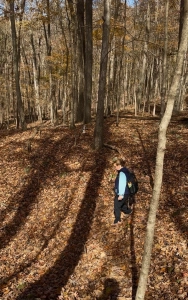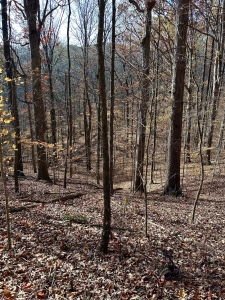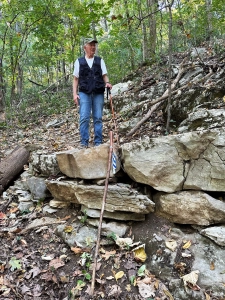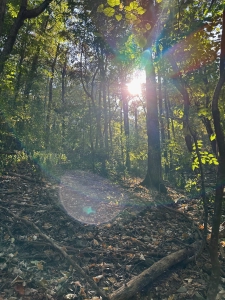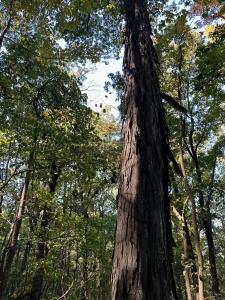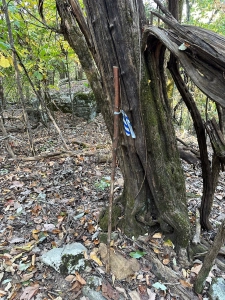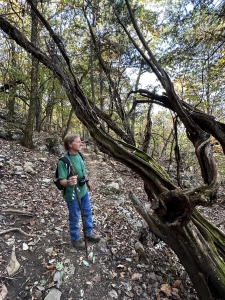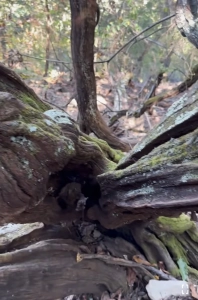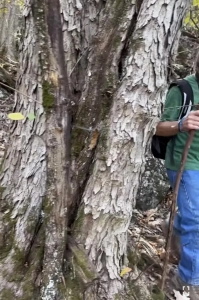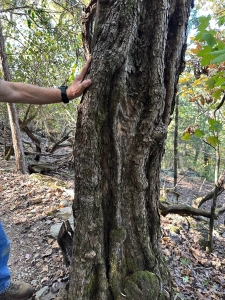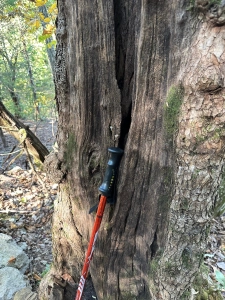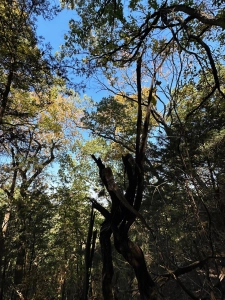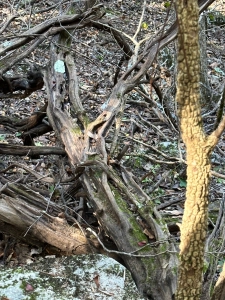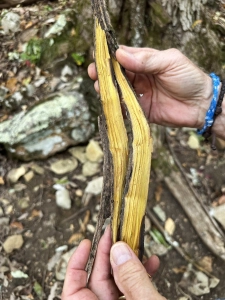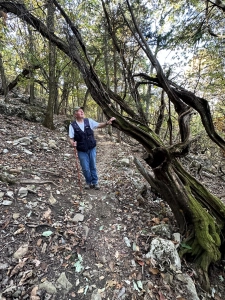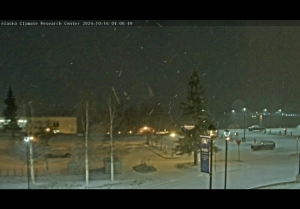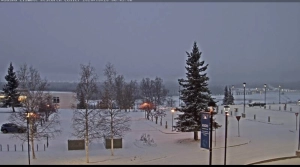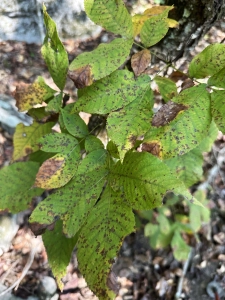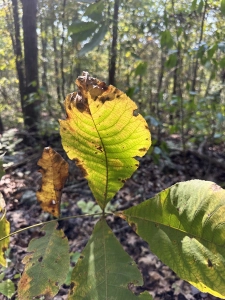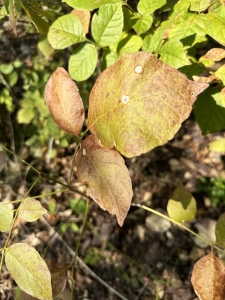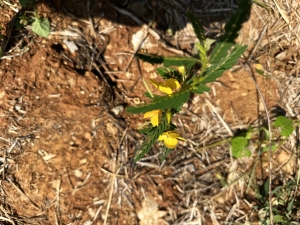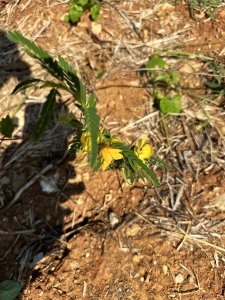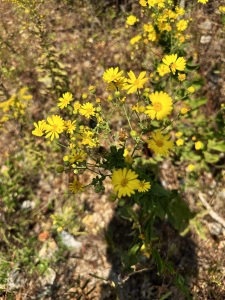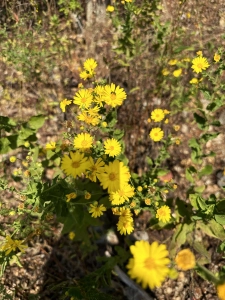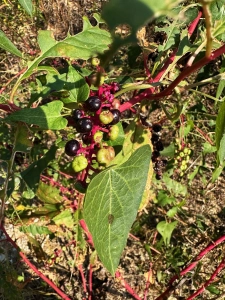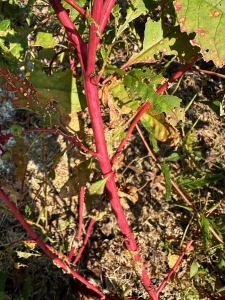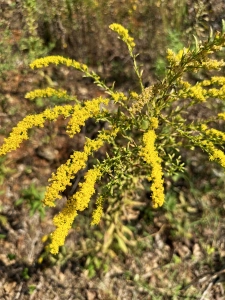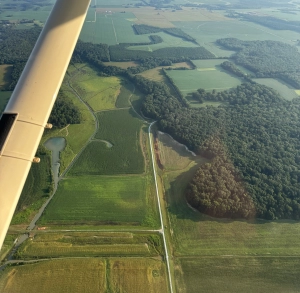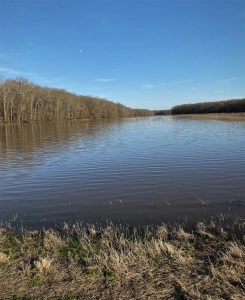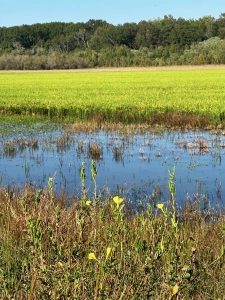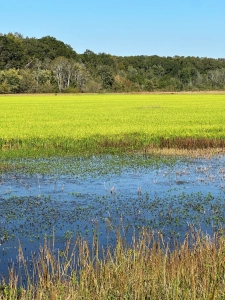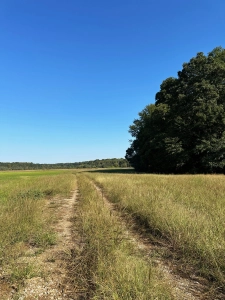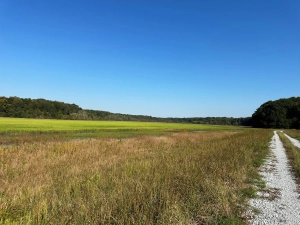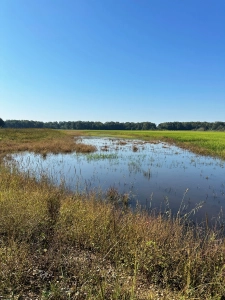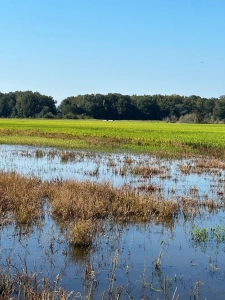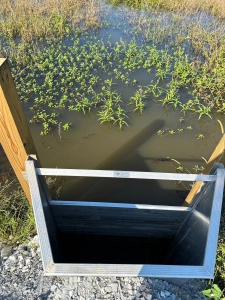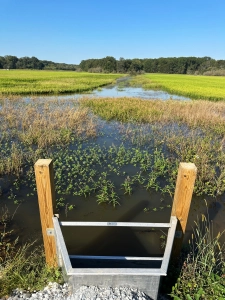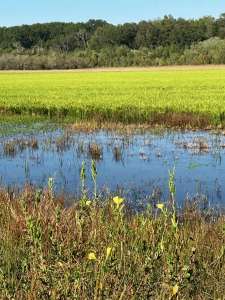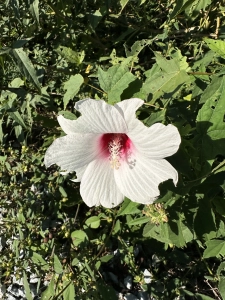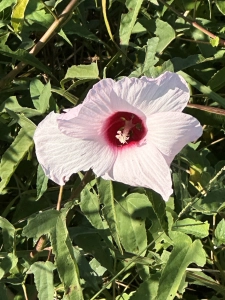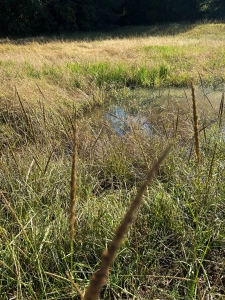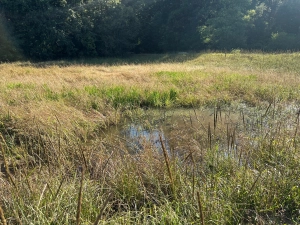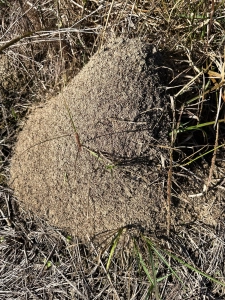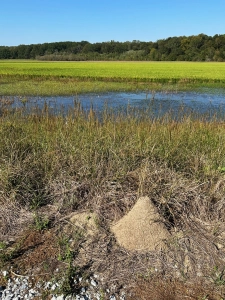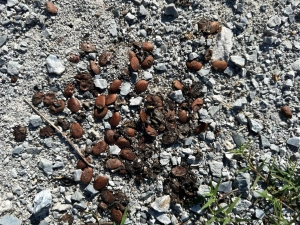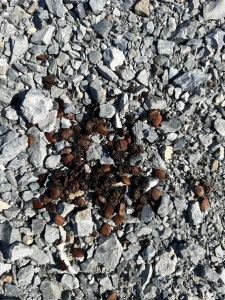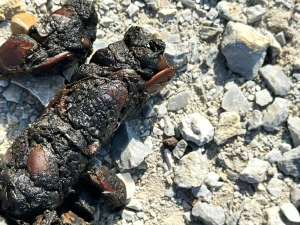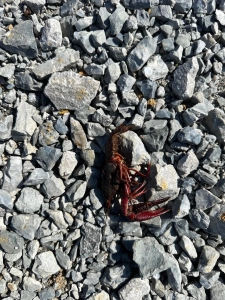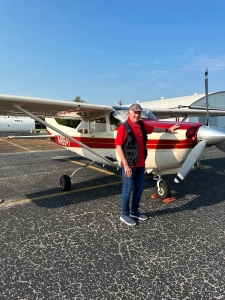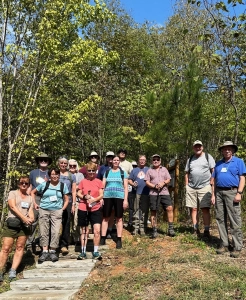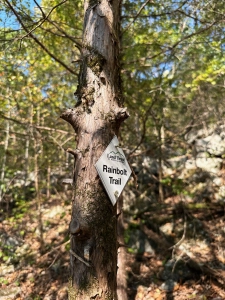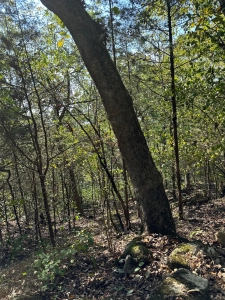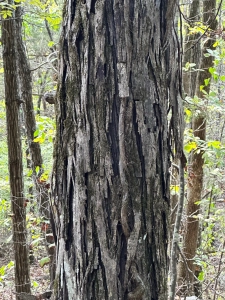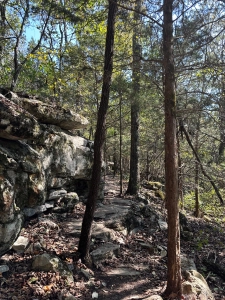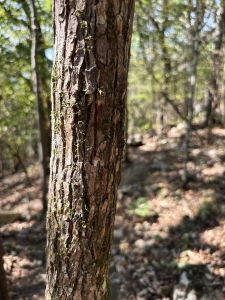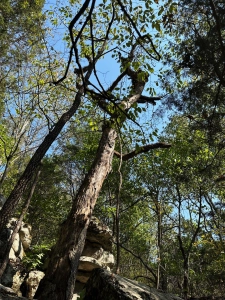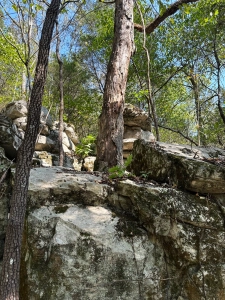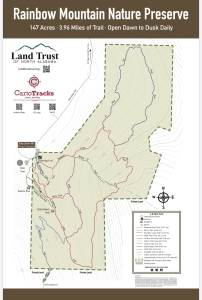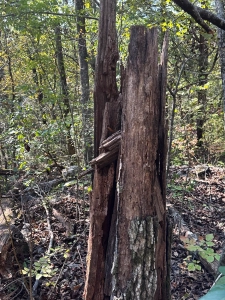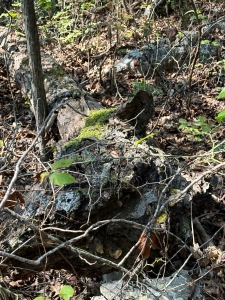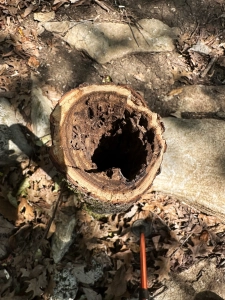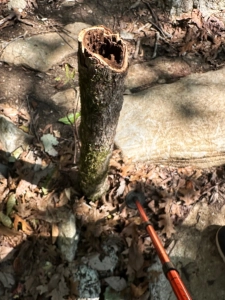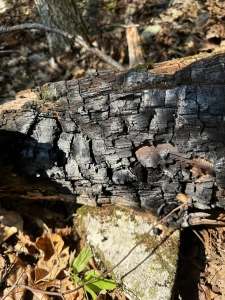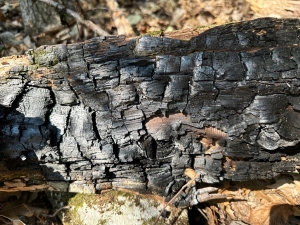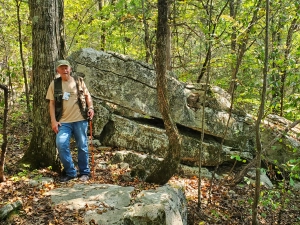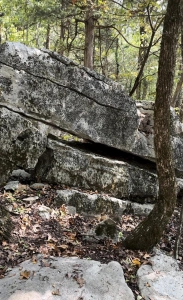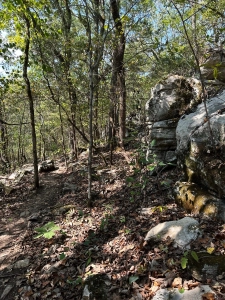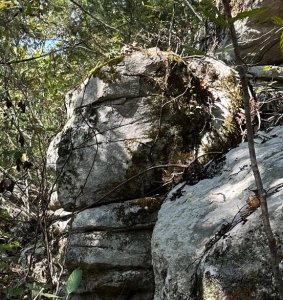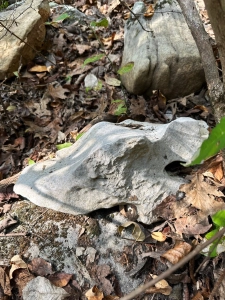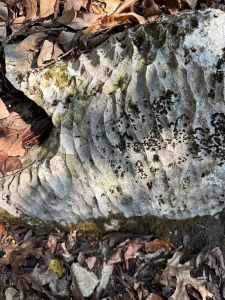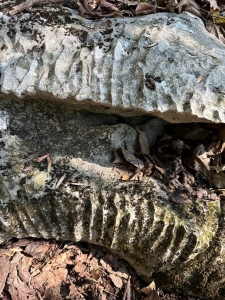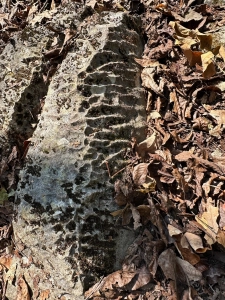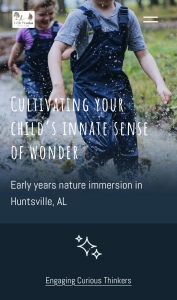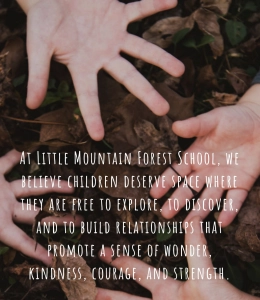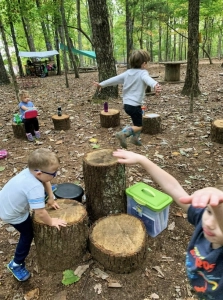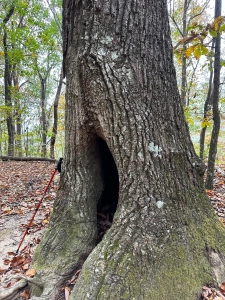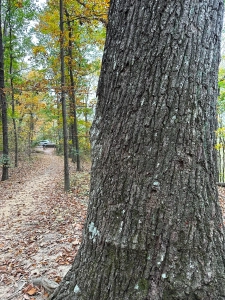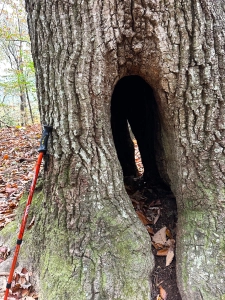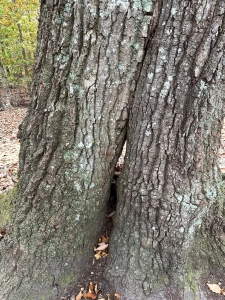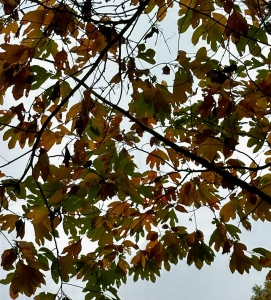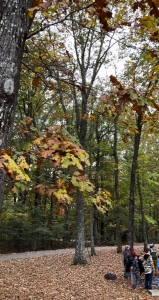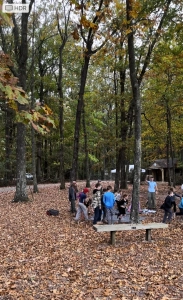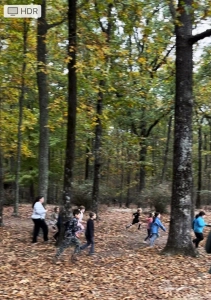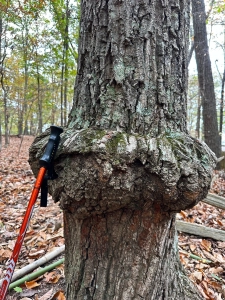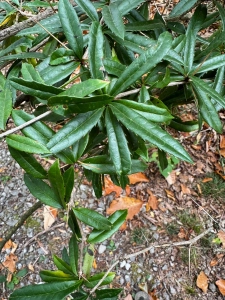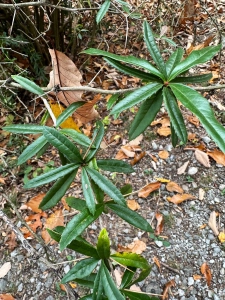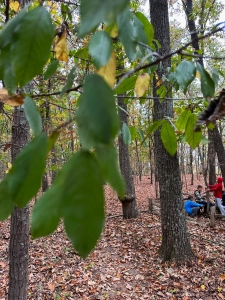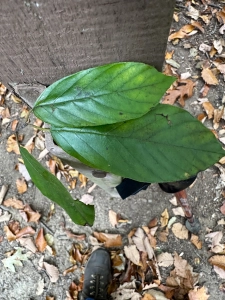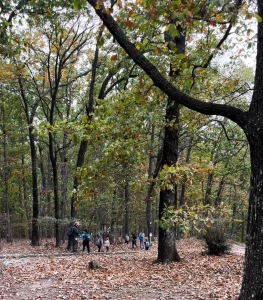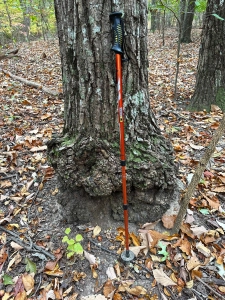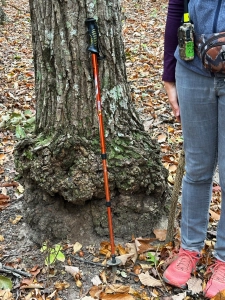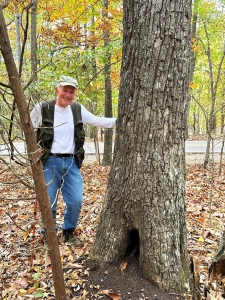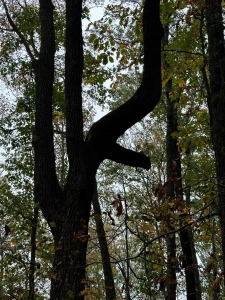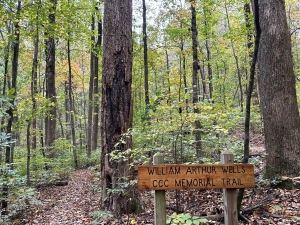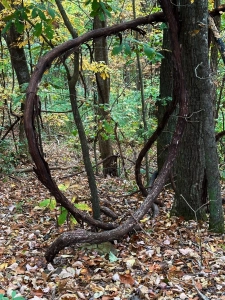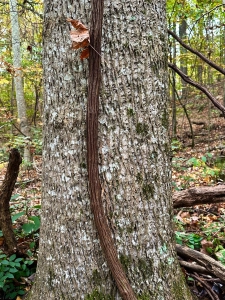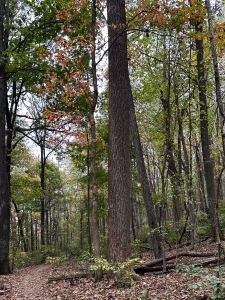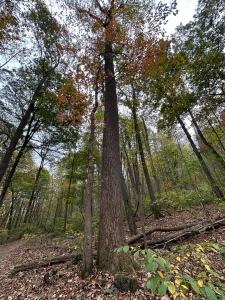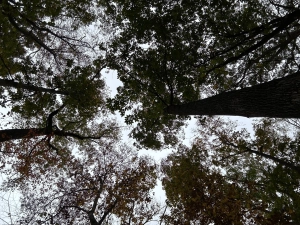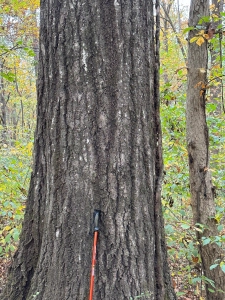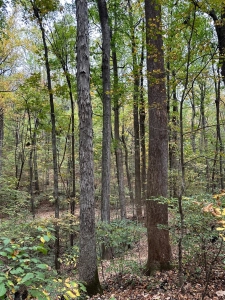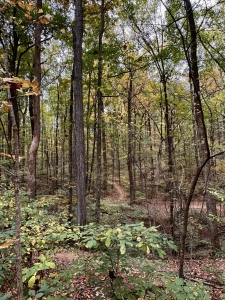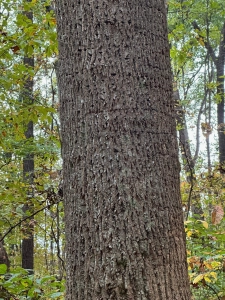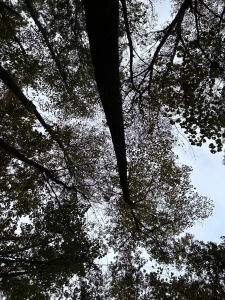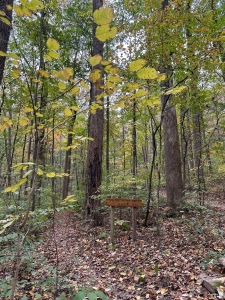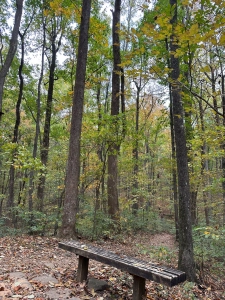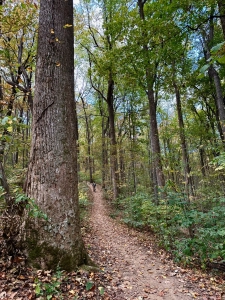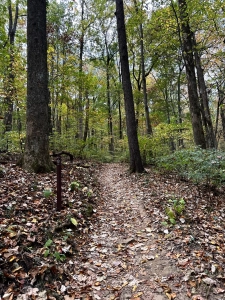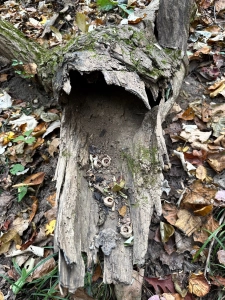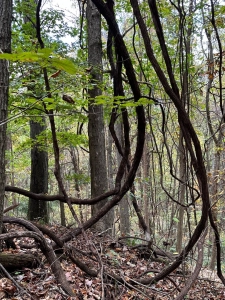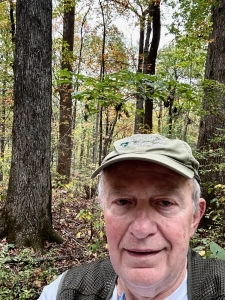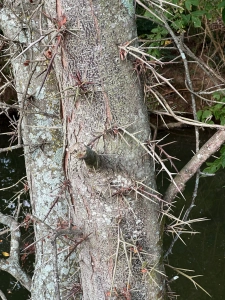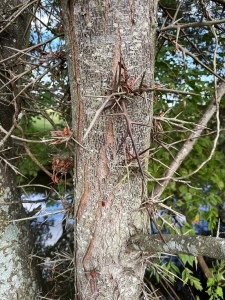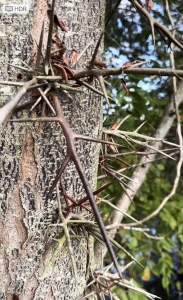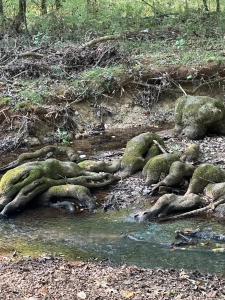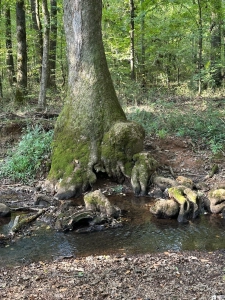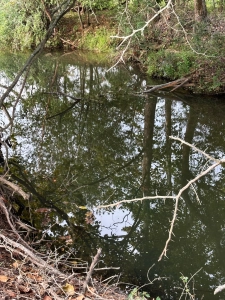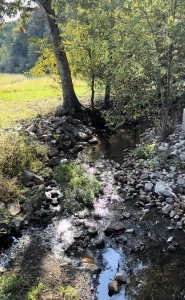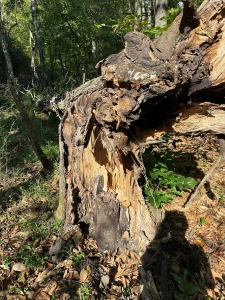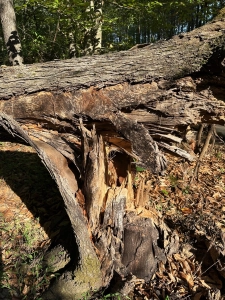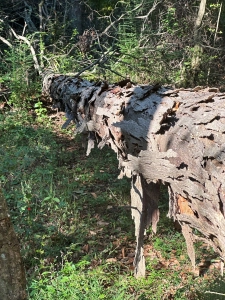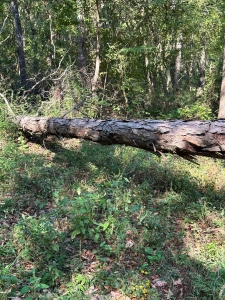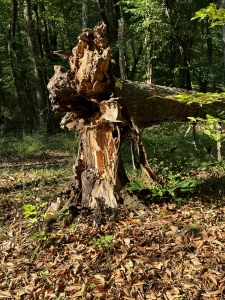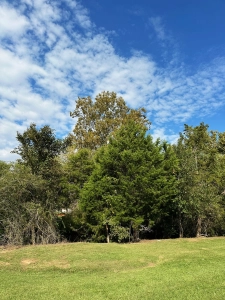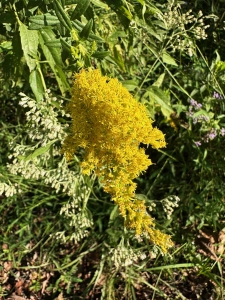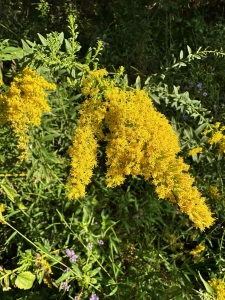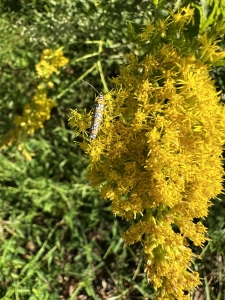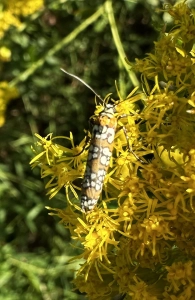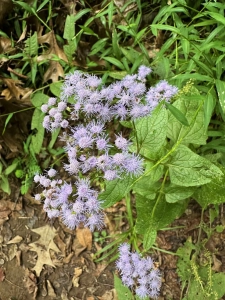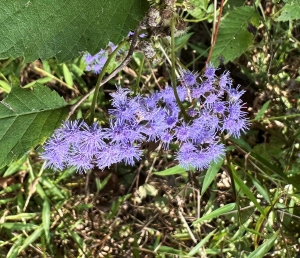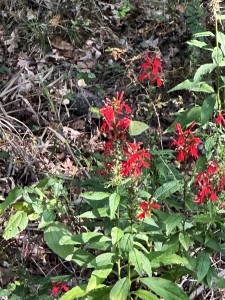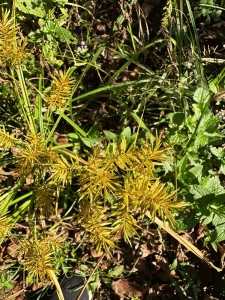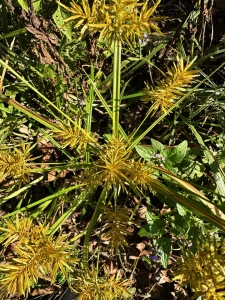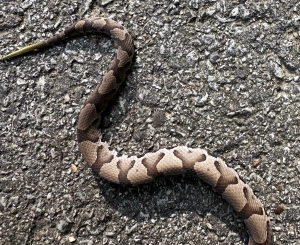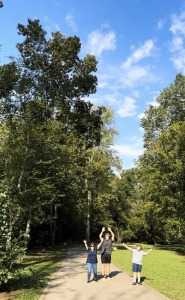Mixed Forest along the Lower Slope of Green Mountain Trail
On October 25, 2024, fellow retired forester Brian Bradley introduced me to the lower mile of the two-year-old Green Mountain Trail, beginning at the Astalot Trailhead. Cognizant of my August 20, 2024 right knee replacement surgery, Brian planned sauntering approximately a mile to what I’ve come to call the Halloween Forest. We had no reason to hurry, taking time to examine and enjoy every element of wonder, awe, inspiration, and beauty we encountered. This photo essay focuses on the lower trail’s mixed mesophytic forest.
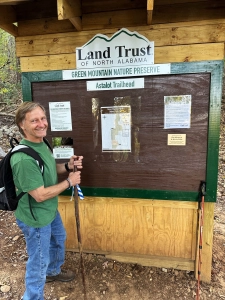
The Land Trust of North Alabama’s 818-acre Green Mountain Nature Preserve is in South Huntsville. The Green Mountain Trail stretches 3.2 miles from Riverview Drive to Green Mountain Road. I am not yet ready for that distance. Perhaps by January 1!
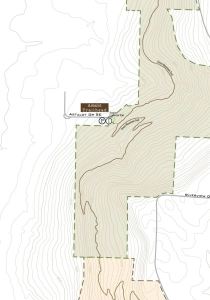
The Astalot Trailhead, where Brian and I met, departs from a parking area at the Astalot Trailhead. The 0.06 mile Connector joined the NE-to-SW Green Mountain Trail. We ascended four prominent switchbacks to the Halloween Forest located approximately where the trail bends southward near the western property line. This Lower Slope photo essay covers the terrain and forest ending at the contour-denoted drainage feature that trends from SE-to-NW about midway from the upper switchback to the western property line.
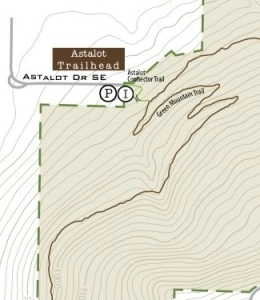
Patches of flowering white snakeroot peppered the lower slope, a surprising artifact of the late summer season.
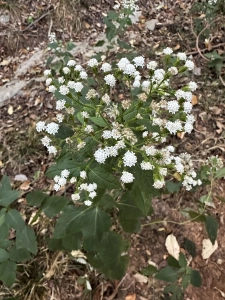
A Native Smoketree Teaser
A few smoketrees greeted us well before we approached the Halloween Forest, teasing me with what Brian indicated we would see in profusion once we reached into higher terrain. American smoketree (Cotinus obovatus) is a relatively rare species, native to the southern United States, growing in the rocky mountain soils from Kentucky, Tennessee, and northern Alabama westward to Oklahoma (NC State Cooperative Extension online bulletin).
Smoketree is neither common nor does it have commercial value, and its range does not overlap where I attended forestry school and took dendrology and tree identification. Hence, at the tender age of 73, this was, to my recollection, my first and only exposure to the native species. Other species of Cotinus, native to southern Europe and Asia, are commonly used for landscaping.
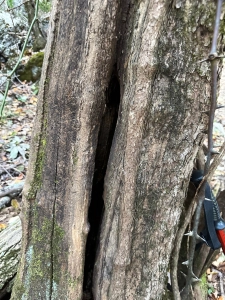

The native species stems are contorted, convoluted, gnarled, and fit my characterization as tree form oddities and curiosities.
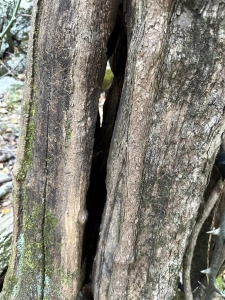
The leaves were already senescing, their green fading and yellow deepening. I am eager to return when fresh leaves emerge and spring flowers earn the smoketree moniker.
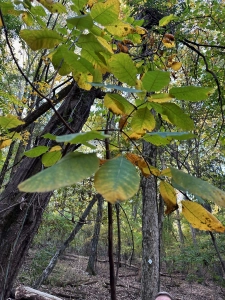
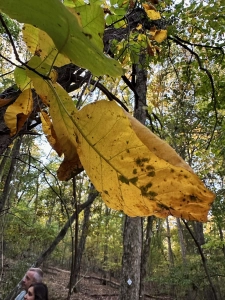
The stems appear ancient, well-weathered, and tortured.
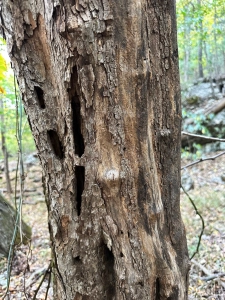
View this brief introdction via the small smoketree patch we encountered near the trailhead as a trailor of sorts, stirring your appetite for the full Halloween photo essay that will follow.
The Mixed Mesophytic Forest
White oak is a major component of the main canopy.
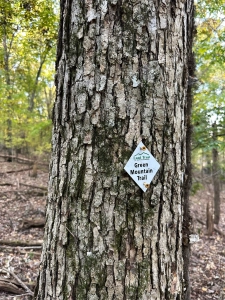
White oak, a long-lived species, will dominate the forest for many decades. Black locust, an early successional species, secured the cutover land 80-90 years ago, and is now departing, succumbing to old age and black cap polypore decay, its bracket mushrooms ubiquitous.
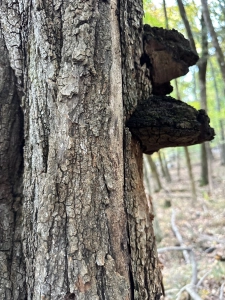
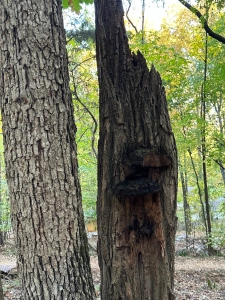
This tall dominant individual bears brackets 30+ feet up the bole.
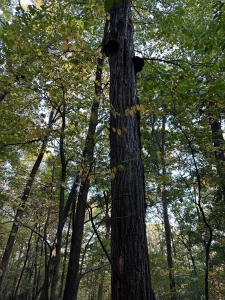
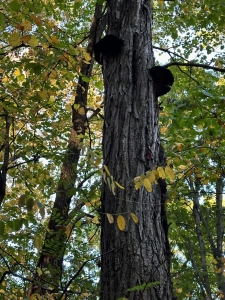
Lying on the ground, this stem shows both the hollow created by a squirrel or woodpecker courtesy of the decay-softened wood. It will serve no more as a bird or squirrel den, yet for a few more years a snake, mouse, or chipmunk may lay claim.
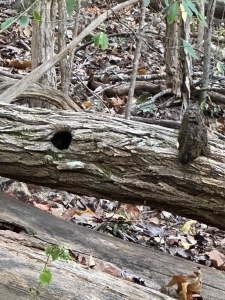
We pondered the tooth marks on this trail sign. Did a squirrel seek to sharpen its teeth? Was there some special nutritional or mineral attractant in the finish? Once again, the answers to Nature’s puzzles and mysteries are not always apparent. Over 73 years of hiking, I have never seen similar sign defacement. Were I still in a New England forest, I would attribute blame to a porcupine, a forest critter reputed to eat anything!
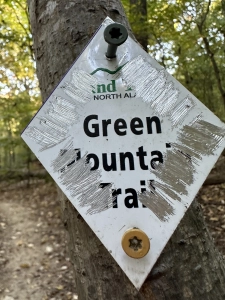
Resistant to ground contact decay, black locust makes great fence posts. Oak and other upland species rot more quickly. This toppled black locust root mass and its still-barked trunk may lie intact for decades. I pictured (and secretly coveted) the root-arms without the trunk as a landscape sculpture, much like a shoreside driftwood.
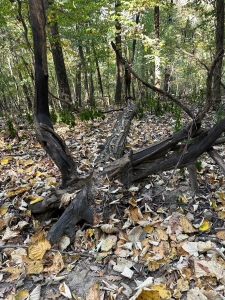
This unusual pair caught my eye. A mockernut hickory, straight and true, stands to the left of what appears to be an ancient white oak…its stem bent and its bark aged and unusually flaked (I thought at first yellow buckeye).
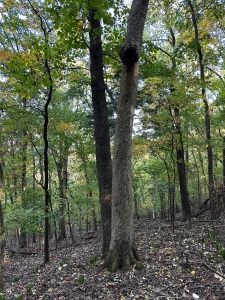
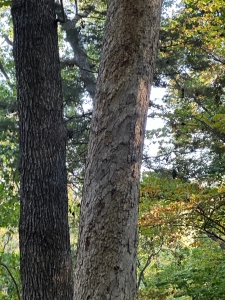
The oak bears a barrel-sized burl 25 feet above the ground, another suggestion that this tree is a residual from a prior stand. I will examine more closely when I revisit.
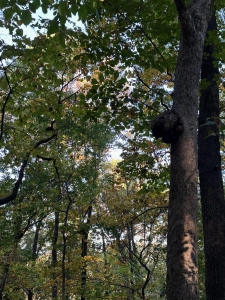
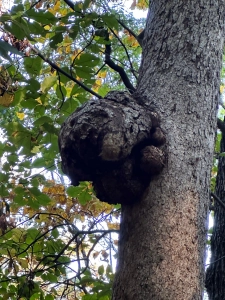
Brian shared my curiosity as we passed along the trail.
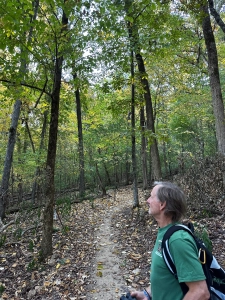
I recorded this 59-second video of a large mockernut hickory. We wondered whether this, too, is a residual from another generation.
My knee would not allow me to assist Brian measuring diameter. Writing the narrative five weeks after our hike, I am confidant I am now able to scramble on the hillside!
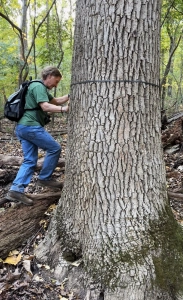
This is one handsome tree. Brian masterfully measured its diameter…a horizontal D-tape placed at 4.5-feet above the stump on the high side! We estimated 36 inches; the measurement gave us just shy of 35! Not bad for a couple of old foresters!
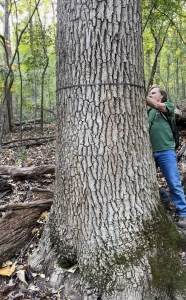
I grew up in the heart of the pawpaw tree range, the central Appalachians, my home just 30 miles from Pawpaw, WV. Less common here in northern Alabama, the tree excites my homing instinct. We stopped to examine a pawpaw patch
Here is my 57-second video of the pawpaw patch we encountered:
Its long leaves deep in understory shade are distinctive.
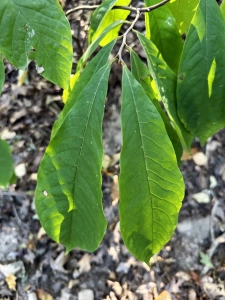

A traditional Appalachian native fruit staple, the song inspired a popular children’s verse from a song that I remember from my youth:
Where, oh where is pretty little Susie?
Where, oh where is pretty little Susie?
Where, oh where is pretty little Susie?
Way down yonder in the paw-paw patch.
Pickin’ up paw-paws, puttin’ ’em in her pockets,
Pickin’ up paw-paws, puttin’ ’em in her pockets,
Pickin’ up paw-paws, puttin’ ’em in her pockets,
Way down yonder in the paw-paw patch.
Come on, children, let’s go find her,
Come on, children, let’s go find her,
Come on, children, let’s go find her,
Way down yonder in the paw-paw patch.
I have yet to find a pawpaw tree bearing fruit here in Alabama. During the three college-year-summers when I worked for the Maryland Forest Service in western Maryland I sampled pawpaw fruit, enjoying what I described as a texture and taste similar to bananas.
We discovered a native buckthorn, nicely striated, more distinctively than any I had previously observed. I’ll look for more when I return.
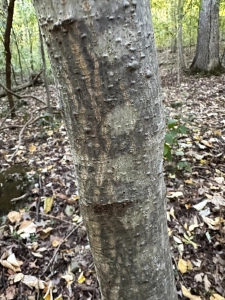
The mid-summer sun barely penetrates our dense forest canopies. By late October its rays brighten the forest floor and illuminates snags like the one below right. I welcome the changing season and its portent of an extened period of dormancy. What glory would there be in spring without the relative gloom of Nature’s December through February rest?
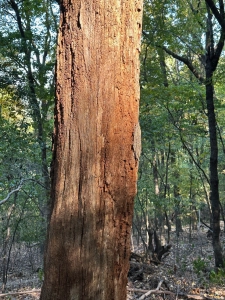
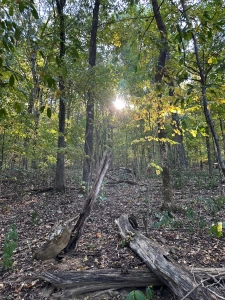
Experiencing the positive evidence of Nature’s indisputable Power of Healing amplified by dedicated phyisical therapy lifts my body, mind, heart, soul, and spirit.
Thoughts and Reflections
I offer these observations:
- The answers to Nature’s puzzles and mysteries are not always apparent.
- What glory would there be in spring without the relative gloom of Nature’s December through February rest?
- Experiencing the positive evidence of Nature’s indisputable Power of Healing amplified by dedicated physical therapy lifts my body, mind, heart, soul, and spirit.
Inhale and absorb Nature’s elixir. May Nature Inspire, Inform, and Reward you!
Note: Unless otherwise noted, all blog post images are created & photographed by Stephen B. Jones. Please circulate images with photo credit: “©2024 Steve Jones, Great Blue Heron LLC. All Rights Reserved.”
Another Note: I am available for Nature-Inspired Speaking, Writing, and Consulting — contact me at steve.jones.0524@gmail.com
A reminder of my Personal and Professional Purpose, Passion, and Cause
If only more of us viewed our precious environment through the filters I employ. If only my mission and vision could be multiplied by untold orders of magnitude:
Mission: Employ writing and speaking to educate, inspire, and enable readers and listeners to understand, appreciate, and enjoy Nature… and accept and practice Earth Stewardship.
Vision:
- People of all ages will pay greater attention to and engage more regularly with Nature… and will accept and practice informed and responsible Earth Stewardship.
- They will see their relationship to our natural world with new eyes… and understand their Earth home more clearly.
Tagline/Motto: Steve (Great Blue Heron) encourages and seeks a better tomorrow through Nature-Inspired Living!
Steve’s Four Books
I wrote my books Nature Based Leadership (2016), Nature-Inspired Learning and Leading (2017), Weaned Seals and Snowy Summits: Stories of Passion for Place and Everyday Nature (2019; co-authored with Dr. Jennifer Wilhoit), and Dutton Land & Cattle: A Land Legacy Story (2023) to encourage all citizens to recognize and appreciate that every lesson for living, learning, serving, and leading is either written indelibly in or is powerfully inspired by Nature. All four of my books present compilations of personal experiences expressing my deep passion for Nature. All four books offer observations and reflections on my relationship with the natural world… and the broader implications for society. Order any from your local indie bookstore, or find them on IndieBound or other online sources such as Amazon and LifeRich.
I began writing books and Posts for several reasons:
- I love hiking and exploring Nature
- I see images I want to (and do) capture with my trusty iPhone camera
- I enjoy explaining those images — an educator at heart
- I don’t play golf!
- I do love writing — it’s the hobby I never needed when my career consumed me
- Judy suggested my writing is in large measure my legacy to our two kids, our five grandkids, and all the unborn generations beyond
- And finally, perhaps my books and Blogs could reach beyond family and touch a few other lives… sow some seeds for the future
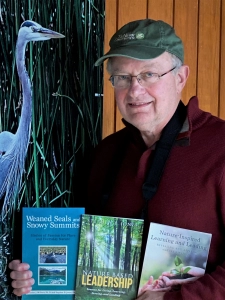
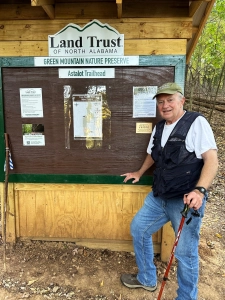

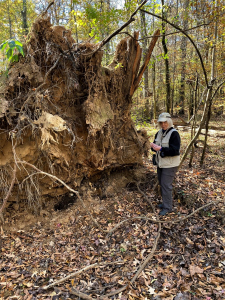
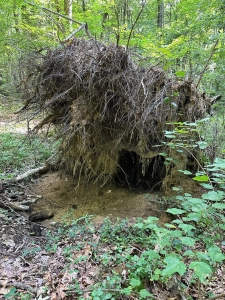
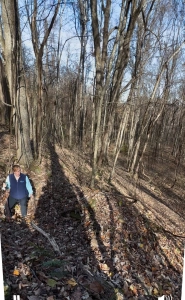
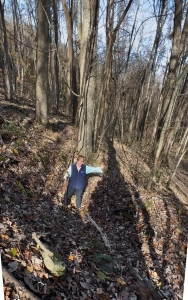
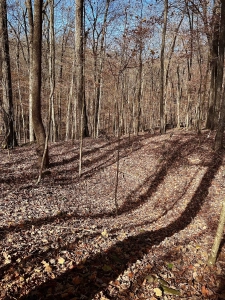
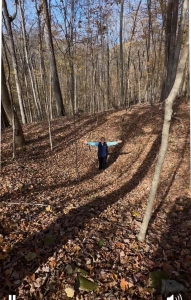 Amber walked into this sinkhole (dimple) that is 25-feet across and 10 feet deep.
Amber walked into this sinkhole (dimple) that is 25-feet across and 10 feet deep.